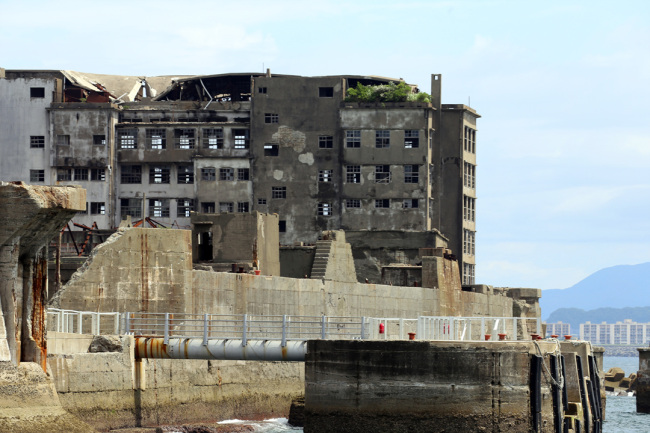South Korea expressed regret Tuesday over Japan’s disregard for its previous vow to honor the victims of colonial-era forced labor in its managing of UNESCO World Heritage-listed industrial facilities.

Hashima Island, also known as Battleship Island, is located 15 kilometers from the city of Nagasaki, southern Japan. (Yonhap)
“The government expresses regret over the implementation report that Japan recently submitted as part of its follow-up measures on the world heritage listing of its modern industrial facilities,” Seoul’s Foreign Ministry said in a commentary issued in the name of its spokesman.
“The government urges Japan to take measures sincerely and swiftly as it promised the international community to remember the victims of its forced hard labor,” it added.
The commentary follows Tokyo’s decision to submit an 851-page report to UNESCO, which pushes for the installation of an information center for modern industrial facilities in Tokyo. Among Japan’s 23 facilities designated as UNESCO World Heritage in July 2015, seven were involved in its mobilization of forced labor from Korea and other Asian nations before and during World War II, including the famous Hashima Island.
Japan’s capital city of Tokyo is nearly 1,200 kilometers away from the now-uninhabited island, also known as Battleship Island, which was once a densely populated coal mining site.
The document also claimed that Korean laborers “supported” Japan’s industrial growth instead of using the phrase “forced labor” to describe those who were drafted against their will.
Although South Korea expressed disagreement over Japan’s initial move to list the facilities in 2015, the Japanese government has insisted they are a symbol of its industrialization.
UNESCO granted the world heritage status on the condition of admitting the use of conscripted labor. The Paris-based UN cultural organization also asked the Japanese government to shed light on the “full history” of the sites.
A compromise was reached on July 15 between Seoul and Japan after a Japanese government representative said many Koreans were “forced to work under harsh conditions” at some of the sites during its 1910-1945 colonial rule of the Korean Peninsula.
But South Korea prodded Japan to carry out its promises during a UNESCO session in July over the lack of action taken to remember the forced labor victims.
A report published in 2012 by the Commission on Verification and Support for the Victims of Forced Mobilization under Japanese Colonialism, an affiliate of the Prime Minister’s Office, showed that 122 of 600 Korean forced laborers died after being conscripted to Hashima Island.
Historians estimate millions of Korean men had been drafted into the Japanese workforce during the Japanese colonial era.
By Jung Min-kyung (
mkjung@heraldcorp.com)






![[Graphic News] More Koreans say they plan long-distance trips this year](http://res.heraldm.com/phpwas/restmb_idxmake.php?idx=645&simg=/content/image/2024/04/17/20240417050828_0.gif&u=)